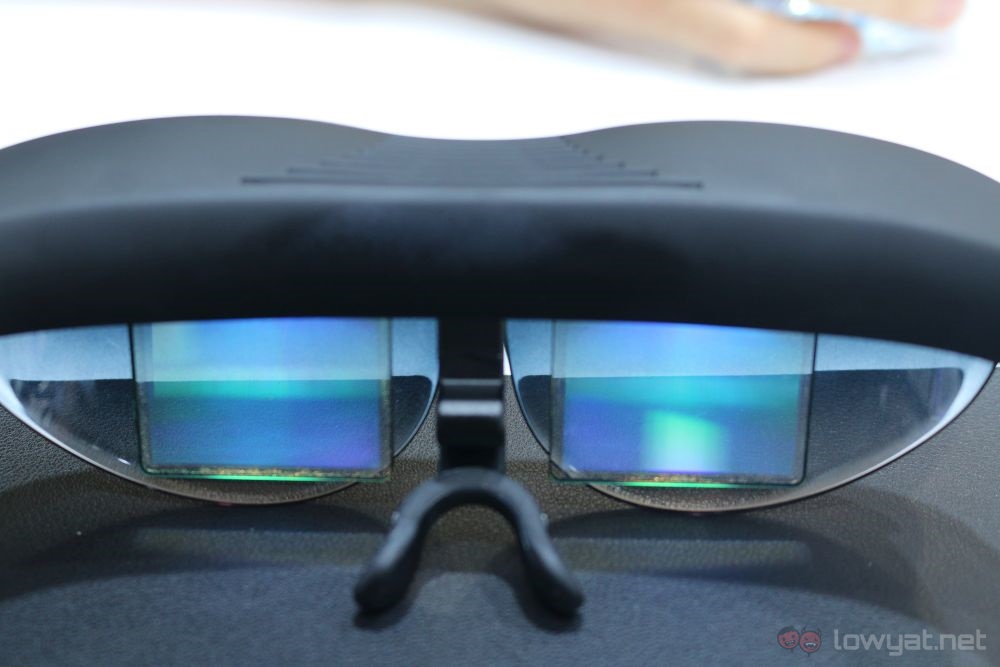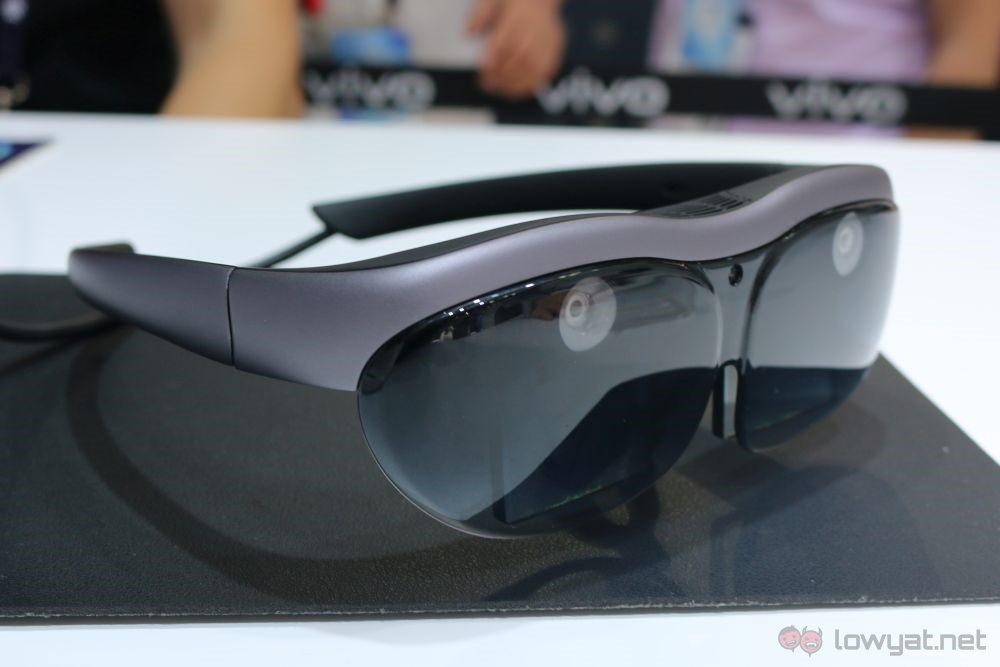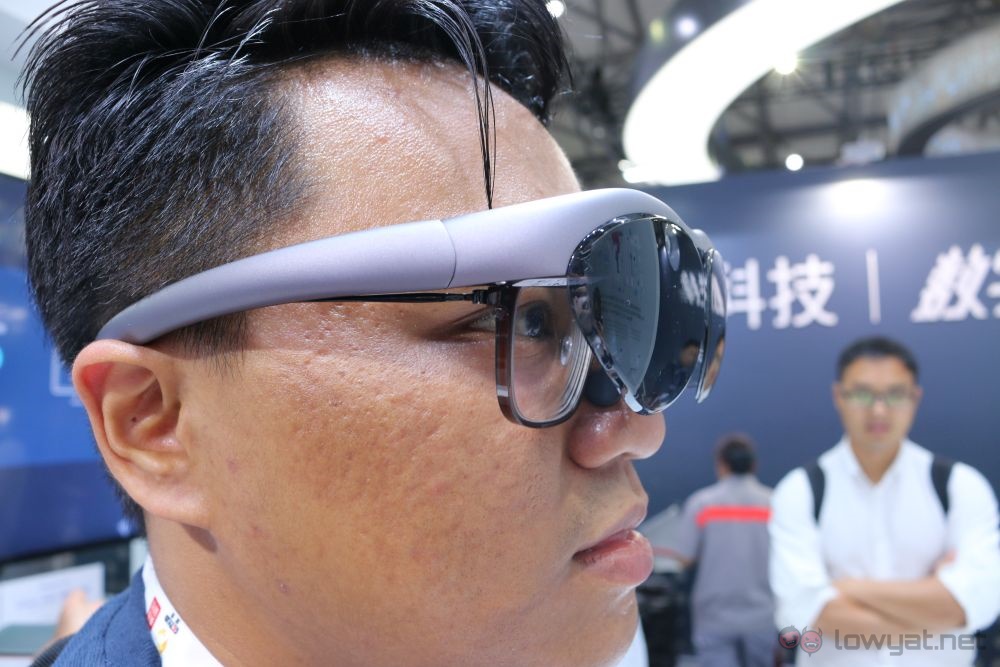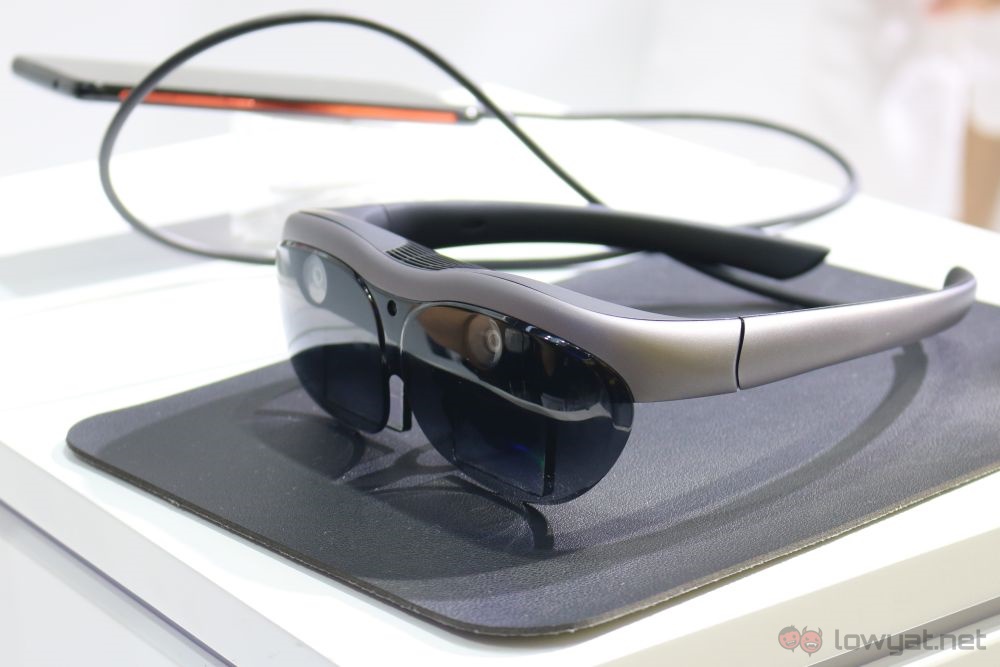As far as AR glasses go, two names would usually come to mind – Google and Microsoft. That said, both companies have decided to focus their AR glasses on enterprise and industrial applications. But now that Vivo has revealed its AR Glass prototype, there’s hope that there will be a consumer version of the smart glasses.
The Vivo AR Glass offer up to six degrees of freedom (6DoF), and features two HD displays – one for each eye. It’s supposed to work wirelessly via 5G connectivity, but the prototype being showcased at MWC Shanghai was plugged to an unidentified Vivo phone. Representatives said this was to deal with the interference, since nearly every other exhibitor was showcasing some form of 5G tech application. The phone also serves as a power source.

In terms of design, the AR Glass has been made to also accommodate people who wear prescription glasses. The middle bit does get a little hot, and you’ll see a grille for heat dissipation. I didn’t have it on for long enough for me to be affected by the heat, but it’s possible that it will be an issue after prolonged use.
While it’s supposed to have quite the range of use scenarios, Vivo made quite the emphasis on object and facial recognition, as well as gaming. The first two works a lot like the object recognition feature that you’ll find on AI-powered cameras. When looking at an object, it displays some basic information on it, as well as its price. On the other hand, looking at a person while having the AR Glass on displays their name and other basic personal information, like age for example.

A representative said that the AR Glass works best at 1.5m range between you and the person or object that you’re looking at. Though in reality, this is not usually the case, as sometime you have to be a little closer to an object for the AR Glass to recognise it. Naturally, it works best under optimal conditions like good lighting and a white background. That said, the requirements seem a little strict, especially with its facial recognition.
As for gaming, it actually works a lot like VR gaming. You launch a game from the phone it’s connected to, and then navigate the gaming space via the AR Glass. The key difference here is obviously that you can also see what’s going on in the real world as well as the the game world. The example being demoed involves shooting down a number of spaceships using the phone’s touchscreen as the trigger, with the crosshairs sitting in the middle of your field of view through the AR Glass.

Granted, the AR Glass that is being showcased at MWC Shanghai is a prototype. It will definitely be awhile before we see a commercial version of the AR Glass. Even then, it remains to be seen if it’s something that is for the general consumer, or like the existing AR glasses, something that’s for the enterprise market.
Follow us on Instagram, Facebook, Twitter or Telegram for more updates and breaking news.



